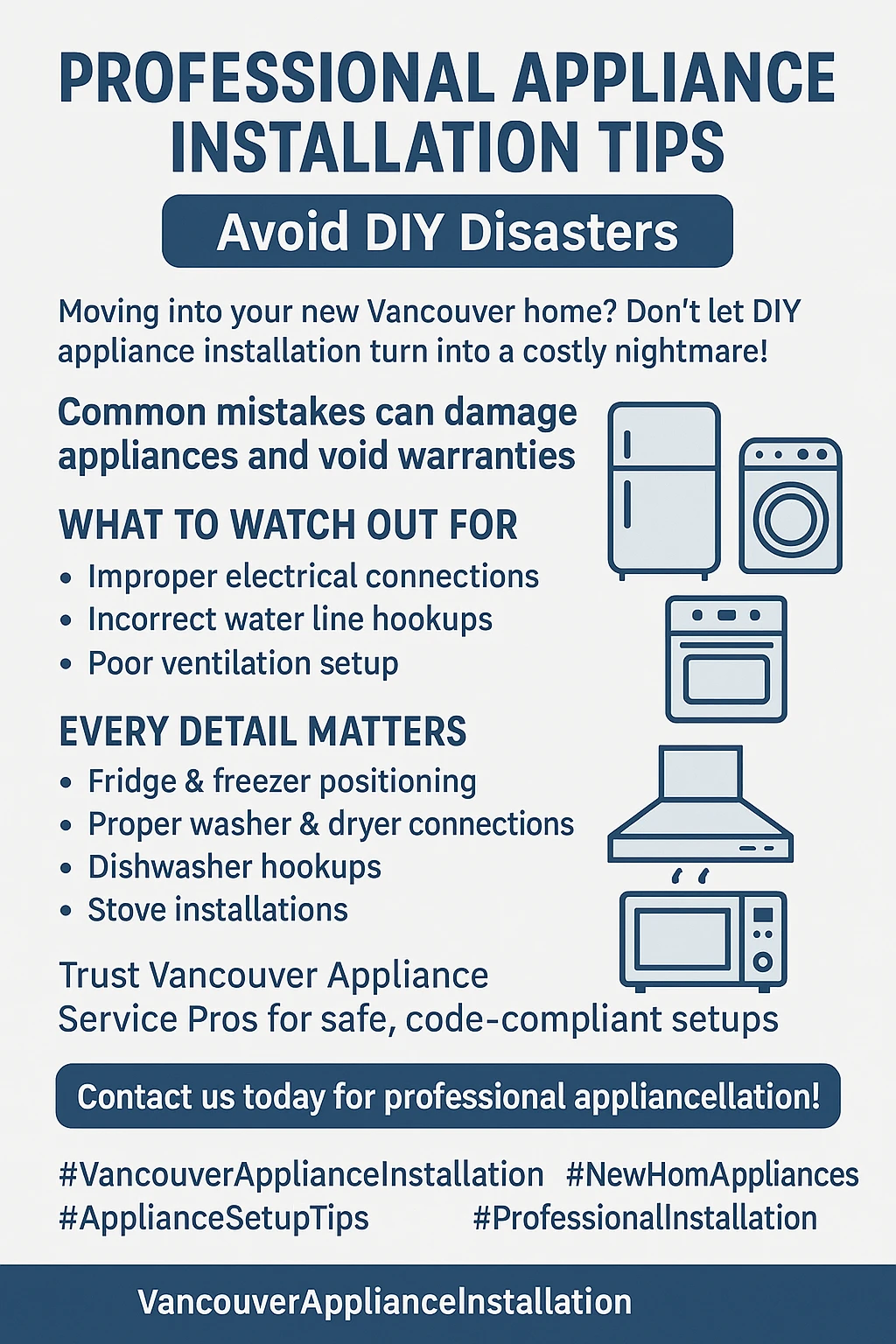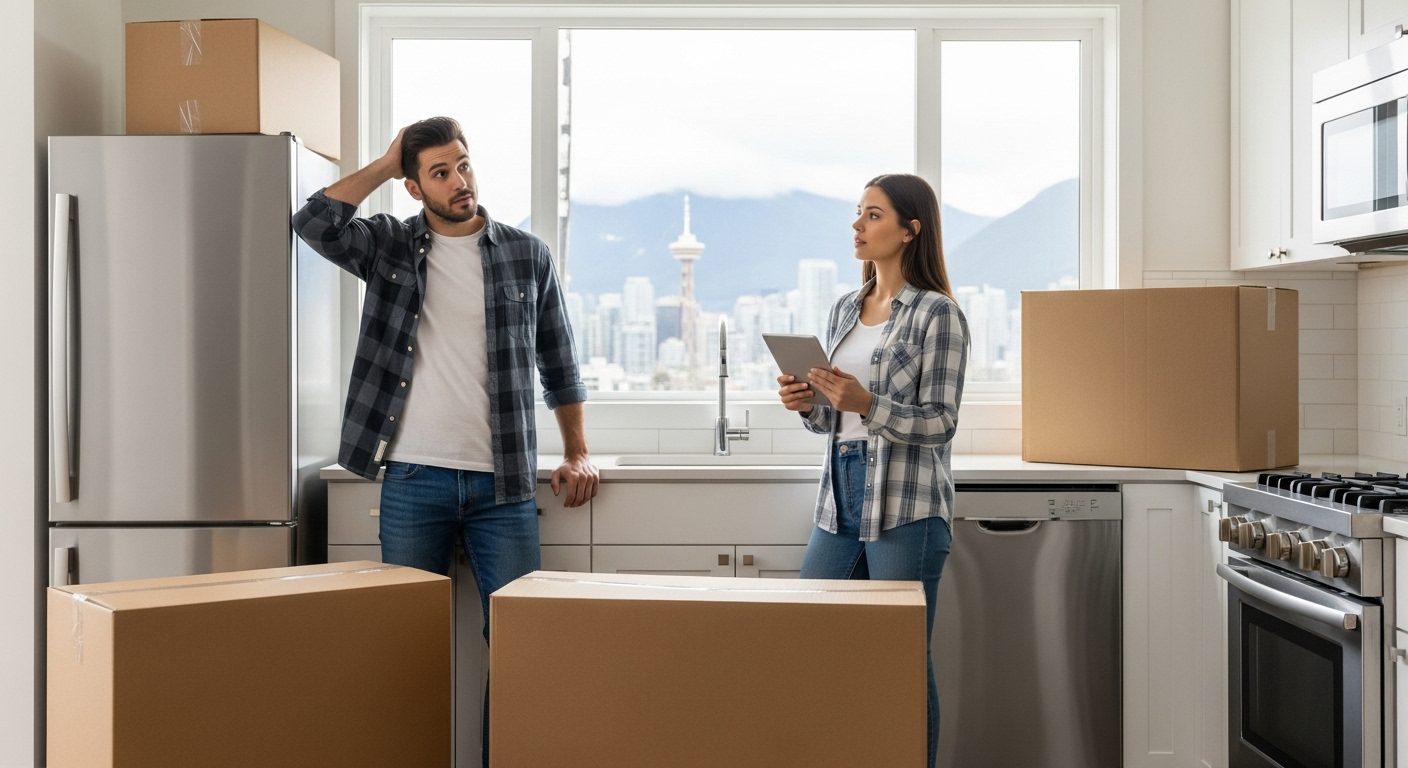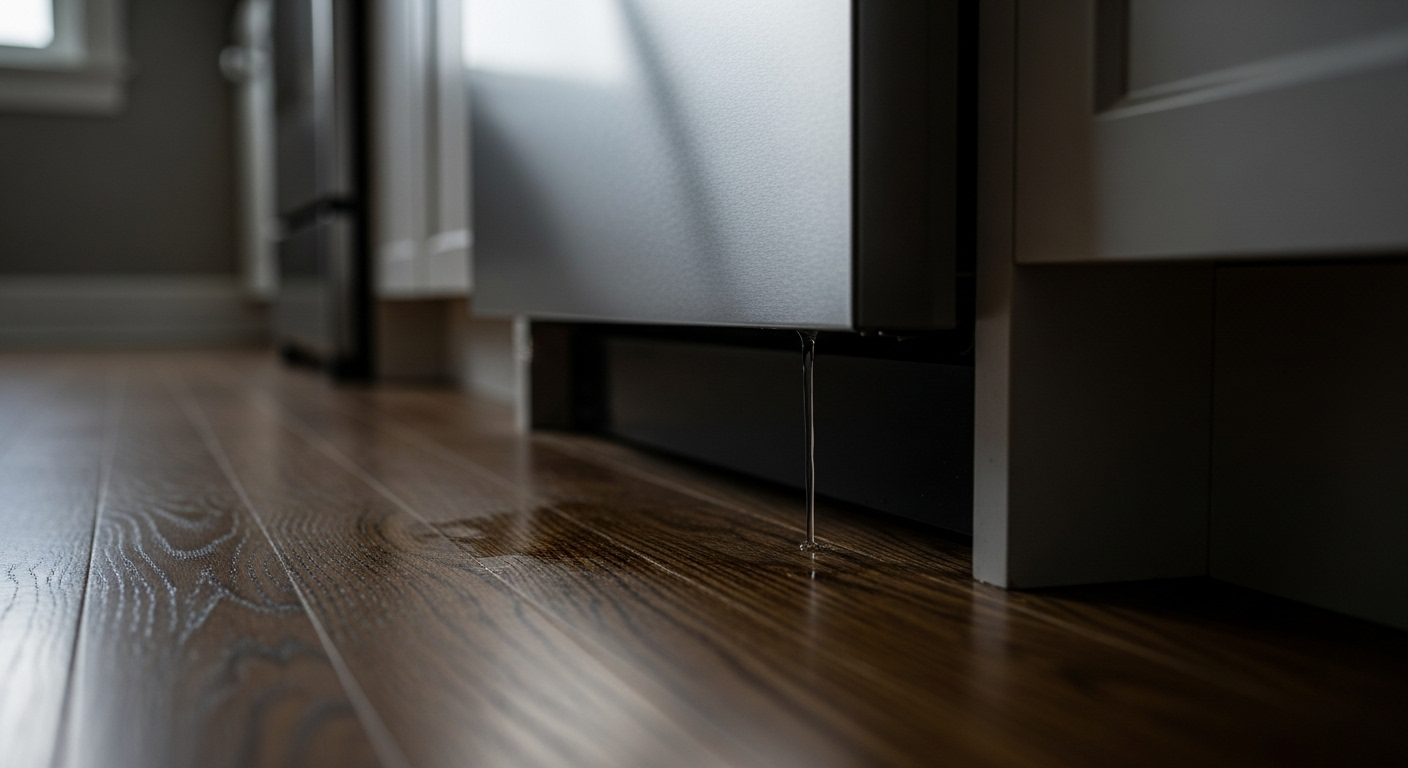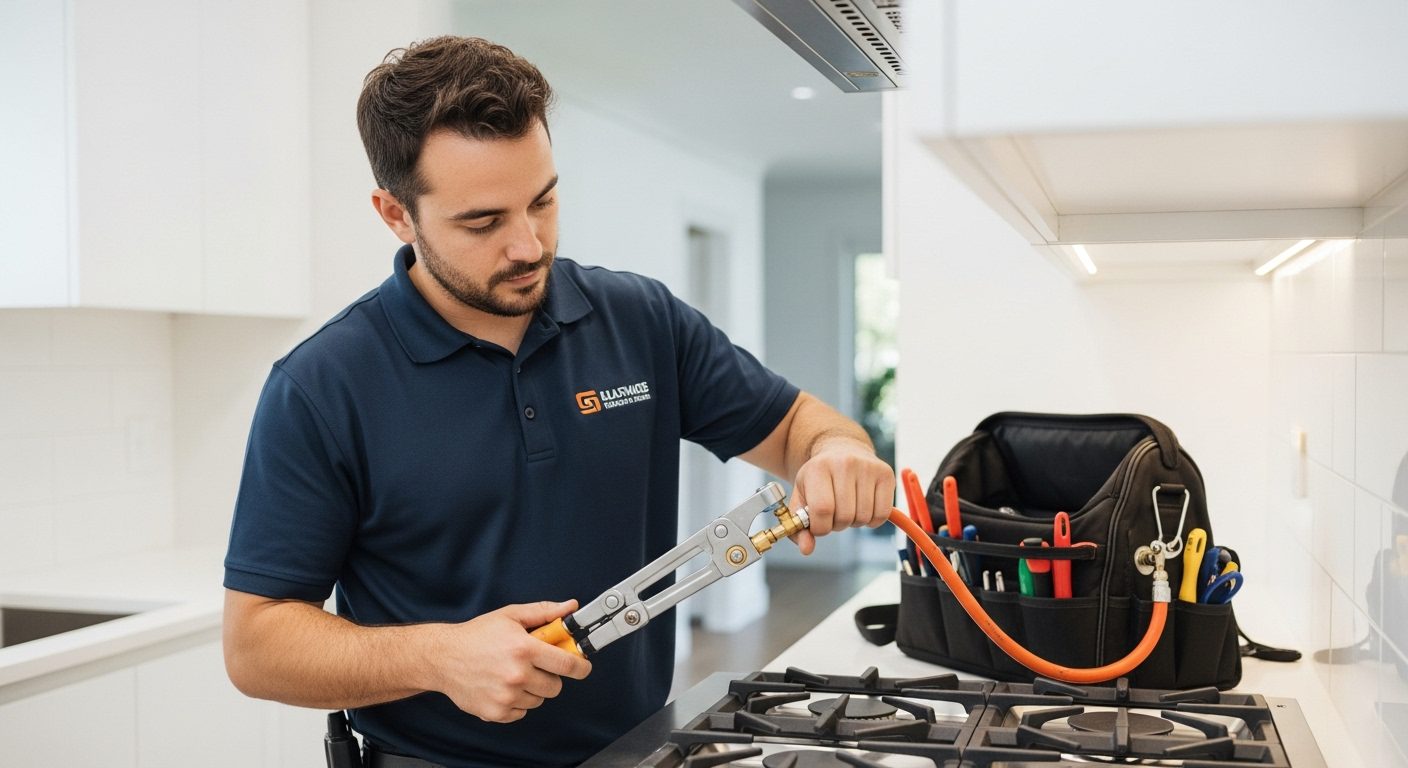Moving into a new home in Vancouver and feeling overwhelmed by all those shiny new appliances that need proper setup? Don’t worry – we’ve got the insider scoop on professional installation tips that’ll save you from those expensive rookie mistakes that can haunt homeowners for years. Picture this: you’ve just scored the keys to your dream Vancouver home, and you’re standing in your pristine kitchen surrounded by boxes containing your brand-new appliances. It’s like Christmas morning, but with a twist – one wrong move during installation could turn your excitement into a costly nightmare. Trust me, I’ve seen too many horror stories of DIY disasters that could have been easily avoided with the right knowledge. The thing is, appliance installation isn’t just about plugging things in and calling it a day. Vancouver’s unique building codes, older home quirks, and our climate considerations all play into getting your appliances set up correctly. Whether you’re dealing with a century-old Kitsilano character home or a brand-new Burnaby condo, each installation comes with its own set of challenges that can catch even the most confident DIYers off guard. Getting professional installation isn’t just about convenience – it’s about protecting your investment and ensuring your family’s safety. Many manufacturers actually extend their warranties when you use certified installers, which tells you something about how important proper setup really is. Plus, Vancouver’s building inspection requirements mean that certain installations absolutely need to meet specific codes, and trust me, you don’t want to fail an inspection over something that could have been done right the first time.
Key Outtakes:
- Professional appliance installation can prevent costly mistakes and extend manufacturer warranties by up to one year
- Vancouver’s building codes require specific installation standards, especially for gas appliances and electrical connections
- Proper planning and coordination can save hundreds of dollars in delivery fees and prevent installation delays
- Many appliance retailers offer complete installation packages including delivery, old appliance removal, and cabinet modifications
- DIY installations often void warranties and can create safety hazards that aren’t immediately apparent

Understanding Vancouver’s Appliance Installation Landscape
Vancouver’s appliance installation scene is unlike anywhere else in Canada, and there are some key factors that make getting it right absolutely crucial for new homeowners. The city’s mix of heritage homes, modern condos, and unique building requirements means that what works in other cities might not fly here. I’ve learned this the hard way after watching friends struggle with installations that seemed straightforward but turned into week-long ordeals.

The first thing you need to know is that Vancouver takes building codes seriously, especially when it comes to gas appliances and electrical work. Technical Safety BC oversees gas installations throughout the province, and they have strict licensing requirements that aren’t just bureaucratic red tape – they’re there to keep your family safe. Any gas range, dryer, or outdoor grill installation needs to be done by someone with the proper credentials, and trying to skip this step can result in hefty fines and insurance headaches down the road. Another unique aspect of Vancouver installations is dealing with the city’s older housing stock. Many homes in neighborhoods like Point Grey, Shaughnessy, and East Vancouver were built decades ago when appliances were much smaller and simpler. This means you might need cabinet modifications, electrical upgrades, or even structural changes to accommodate modern appliances. What looks like a simple dishwasher swap can quickly become a major renovation if you don’t plan properly.
The Hidden Costs of DIY Installation Mistakes
Let me tell you about the most expensive lesson my neighbor learned last year – trying to install his own gas range seemed like a no-brainer until he discovered that one tiny mistake with the gas line connection could have burned down half the block. The fire department’s investigation, insurance claims, and remediation costs ended up being nearly ten times what professional installation would have cost. This isn’t meant to scare you, but rather to illustrate that some mistakes carry consequences way beyond a bruised ego. Water damage is another silent killer when it comes to appliance installations gone wrong. Dishwashers, washing machines, and refrigerator water lines might seem straightforward, but improper connections can lead to slow leaks that go unnoticed for months. By the time you discover the problem, you’re looking at thousands of dollars in flooring replacement, drywall repair, and potential mold remediation. I’ve seen Vancouver homeowners lose entire basement suites to water damage from a washing machine installation that look perfect on the surface but had a slightly loose connection.

Electrical issues present their own set of expensive surprises. Modern appliances draw significant power, and older Vancouver homes weren’t designed with today’s electrical demands in mind. Installing a high-powered electric range or dryer without proper electrical assessment can overload circuits, trip breakers repeatedly, or even create fire hazards. The cost of rewiring, upgrading panels, and bringing everything up to code can easily reach several thousand dollars – money that could have been saved with proper planning from the start. Then there’s the warranty nightmare. Most major appliance manufacturers void their warranties if the unit wasn’t installed by a certified professional, and they’re surprisingly good at detecting DIY installations during service calls. That expensive refrigerator that breaks down six months after you installed it yourself? You’re on your own for repairs that could cost as much as a new appliance. Professional installers not only preserve your warranty but many manufacturers actually extend coverage when you use their certified installation partners.
Choosing the Right Professional Installation Service
Finding the right installation team in Vancouver can feel overwhelming with so many options available, but knowing what to look for makes the process much more manageable. The key is understanding that not all installation services are created equal, and the cheapest option often ends up being the most expensive in the long run. I’ve learned to evaluate installers based on several critical factors that separate the pros from the wannabes.

First, verify their credentials and licensing, especially for gas appliances. In British Columbia, anyone working on gas lines must be licensed through Technical Safety BC, and you should never work with someone who can’t produce proper documentation. Established companies will have all their licensing information readily available and won’t hesitate to show you their certifications. They should also carry comprehensive liability insurance, because accidents can happen even to the best installers, and you don’t want to be on the hook for damages. Experience specifically with Vancouver homes is invaluable. The city’s unique mix of heritage properties, condos with space constraints, and varying building standards requires installers who understand local quirks. Ask potential installers about their experience with your type of home and neighborhood – someone who’s primarily worked on new construction in Surrey might not be the best choice for your 1920s Dunbar heritage home. The best installers will ask detailed questions about your space and might even request photos or measurements before providing quotes. Look for installation services that offer comprehensive packages beyond just hooking up your appliances. The most valuable installers provide delivery coordination, old appliance removal, cabinet modifications, and even basic repairs to make everything fit perfectly. This one-stop approach saves you time, reduces the chance of miscommunication, and ensures that if something goes wrong, there’s one company responsible for making it right. Many of Vancouver’s top appliance retailers have partnerships with installation companies that offer these complete packages, which often provide better value than piecing together services from multiple vendors. Customer reviews and references tell the real story about installation quality. Don’t just look at star ratings – read the detailed reviews to understand how companies handle problems, delays, and unexpected complications. The best installers in Vancouver have long lists of satisfied customers who are happy to share their experiences. If an installer hesitates to provide references or seems evasive about their previous work, that’s a red flag worth heeding.
Essential Preparation Steps for Smooth Installation
Proper preparation can make the difference between a seamless installation day and a frustrating experience that stretches across multiple visits, and most homeowners don’t realize how much they can do ahead of time to ensure everything goes smoothly. The key is thinking like a professional installer and anticipating potential roadblocks before they become expensive problems. I always tell people that the most successful installations happen when homeowners take an active role in preparation rather than just waiting for the installers to figure everything out on the spot. Start by carefully measuring everything – and I mean everything. Your new appliances need to fit not just in the designated spaces, but they also need clearance for doors to open, proper ventilation, and access for future service calls. Vancouver’s older homes often have quirky dimensions that don’t match modern standards, so don’t assume that because your old dishwasher fit, the new one will too. Measure the height, width, depth, and door clearances, then compare them to the exact specifications of your new appliances, including any packaging or installation materials. Clear pathways and protect your home before the installers arrive. Map out the route from your front door to each appliance location and remove any obstacles that could slow things down or cause damage. This includes furniture that might need moving, rugs that could be tripping hazards, and fragile items that should be relocated. Many




